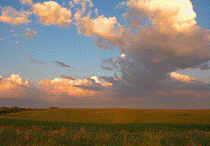
Proceedings of the North American Prairie Conferences
Date of this Version
1989
Document Type
Article
Abstract
Over the course of a decade, studies were conducted throughout northern Illinois and northeastern Indiana to locate old settler cemeteries containing prairie vegetation and to determine their species composition. Of the 824 cemeteries investigated in 42 counties in northern Illinois and in 20 counties in northwestern Indiana, 150 contained some prairie species. Of the 44 cemeteries that had sufficient prairie species to warrant study, 29 were silt-loam prairies, 14 were sand and silt-loam savannas, and one was a sand prairie. A total of 180 species of prairie plants were found in the 29 silt-loam cemetery prairies, belonging to 43 different families. The Compositae had the most representatives with 48 species (26%), followed by Gramineae with 15 (8%), Cyperaceae with 14 species (7%), and the Leguminosae had 12 (6%) species. The soils present in these cemeteries had deep A-horizons, and most showed no evidence of ever having been plowed. They represent a cross-section of the soil types found in northern Illinois and northwestern Indiana, with loess soils in the west and till soils in the east. This difference in soil type influences the relative abundance of some prairie species.


Comments
Published in Prairie Pioneers: Ecology, History and Culture: Proceedings of the Eleventh North American Prairie Conference, August 7-11, 1988, Lincoln, Nebraska (Lincoln, NE 1989).